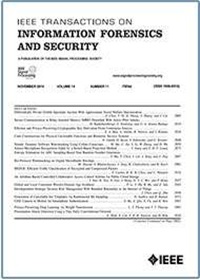Post-Quantum Rollup: Falcon Signature Aggregation Based on SNARG With Enhanced Gates
IF 6.3
1区 计算机科学
Q1 COMPUTER SCIENCE, THEORY & METHODS
IEEE Transactions on Information Forensics and Security
Pub Date : 2025-02-21
DOI:10.1109/TIFS.2025.3544490
引用次数: 0
Abstract
Blockchain layer 2 solutions aim to address scalability issues in Layer 1 networks by improving transaction efficiency and alleviating congestion. The rollup, a well-known Layer 2 scaling protocol, uses an aggregate signature scheme based on the succinct non-interactive argument of knowledge (SNARG) to package transactions. The further promotion of rollup faces the challenge of balancing computation efficiency and communication costs. In addition, with the continuous development of quantum computing, a transition to post-quantum cryptography is considered crucial for long-term security. Our main contribution is an aggregate Falcon signature scheme for post-quantum rollup based on a novel SNARG scheme. The proposed SNARG is based on the Plonkish circuit with enhanced custom gates, referred to as the ECG circuit, and a post-quantum multilinear polynomial commitment scheme (PolyCom). The former can represent more complex operations while also controlling the witness scale. The latter realizes quantum-resistant security for the proposed SNARG and the aggregate signature. In comparison to the aggregate signature based on Orion, our scheme achieves lower aggregation and communication costs. Performance analysis indicates a 38 % decrease in aggregation time and a 88 % decrease in communication costs. As an additional contribution, we introduce a novel polynomial interactive oracle proof (PolyIOP) protocol for the ECG circuit, which can combine with a multilinear PolyCom scheme to form a SNARG protocol with lower computation and communication overhead compared to existing schemes.求助全文
约1分钟内获得全文
求助全文
来源期刊

IEEE Transactions on Information Forensics and Security
工程技术-工程:电子与电气
CiteScore
14.40
自引率
7.40%
发文量
234
审稿时长
6.5 months
期刊介绍:
The IEEE Transactions on Information Forensics and Security covers the sciences, technologies, and applications relating to information forensics, information security, biometrics, surveillance and systems applications that incorporate these features
 求助内容:
求助内容: 应助结果提醒方式:
应助结果提醒方式:


